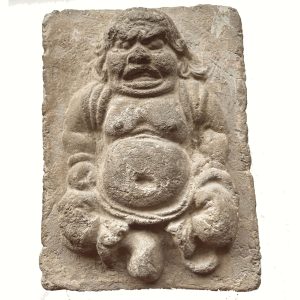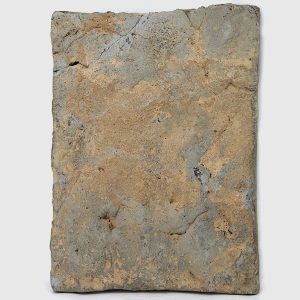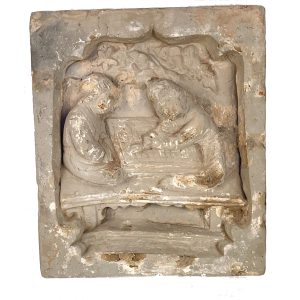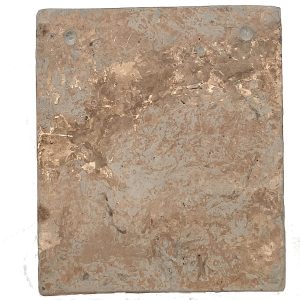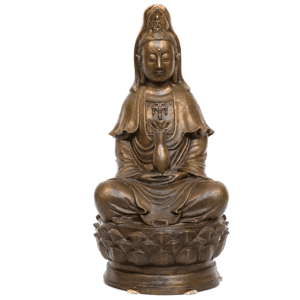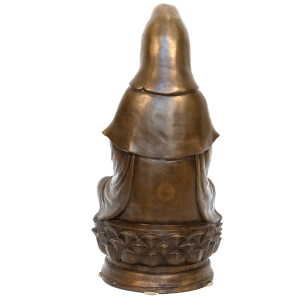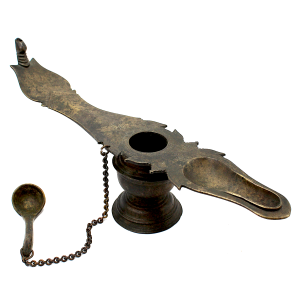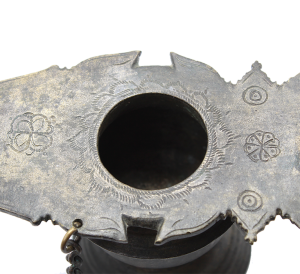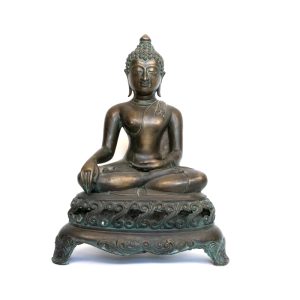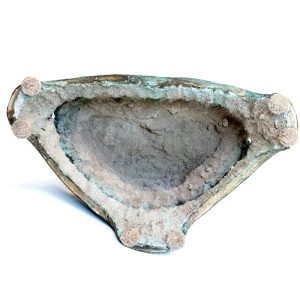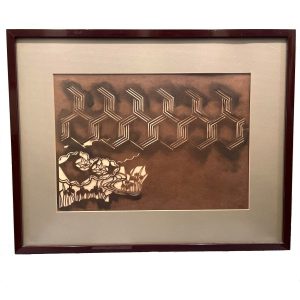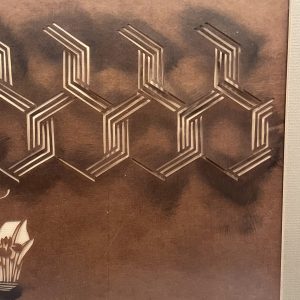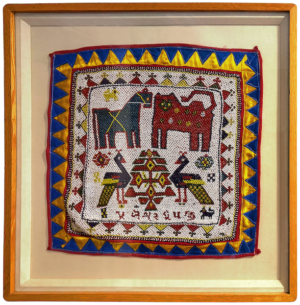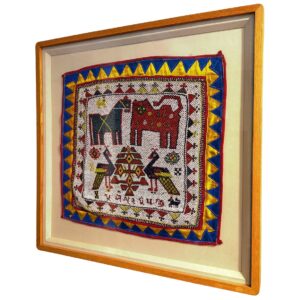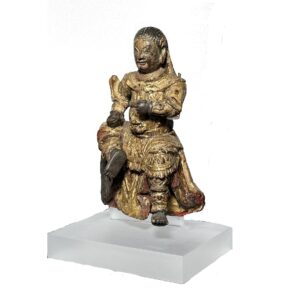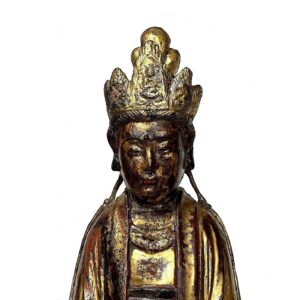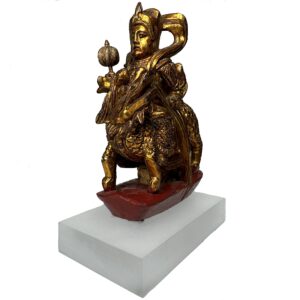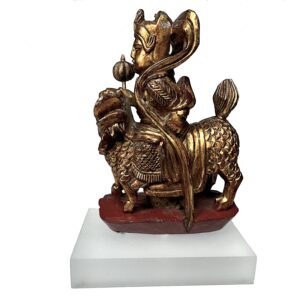Showing 217–228 of 313 results
-
Sale!


$475.00 Original price was: $475.00.$325.00Current price is: $325.00.
Ht: 6.875″ W: 5.25” D: 2.25 | FREE SHIPPING WITHIN CONTINENTAL U.S.!
This fascinating thick Song pottery brick is a low-fired depiction of a dwarf foreigner with a rotund belly, a large head and nose, an open mouth and abnormal features. The Chinese believed dwarfs could ward off evil spirits and sickness, attract peace and blessings (fu) and were very wise. Images of dwarfs became so popular, some were produced in numbers.
-


$495.00
H: 11” W: 9.5” \ D: 2” | FREE SHIPPING WITHIN CONTINENTAL U.S.
As part of the The Song dynasty cultural expansion, government and public buildings and tombs were built with interior walls decorated with earthenware unglazed mold-made brick tiles. This fanciful vibrant tile with a scalloped frame portrays two people playing a board game called wéiqí which originated in China over 2500 years ago. It is the world’s oldest and most complex board game still played.
-


$465.00
This late Song dynasty earthenware ceramic brick tile portrays a couple sitting behind a banquet table with foods placed in front of them. On the right are two figures, one of whom points to a stylized image of a bat flying in the sky.
-


$485.00
H: 19.5” W: 9.375” D: 9” | CALL 213-568-3030 FOR SHIPPING
This lovely 20th century Thai bronze statue is the White Clad Guanyin seated in meditation with her hands in her lap holding her vial of precious dew with her legs covered by her robes which flow to the top of the finely rendered multi-tiered lotus throne. Her open hood is centered by a mandorla surrounding an image of Buddha Amitabha, the Buddha of Infinite Light, her spiritual teacher. She is a vision of compassionate serenity with her half closed eyes and benevolent smile.
-


$450.00
A belief in Hinduism is that the light and heat produced by an oil lamp and incense burner aid devotees to access the divine and to focus their attention and awareness on the images of the deities (murti) and their positive powers. Using them with fellow devotees in combination with the arati ritual (moving a…
-


$395.00
H: 21” W: 15.5 ” D: 9.5” | CALL 213-568-3030 FOR SHIPPING
The beautiful contemporary bronze Buddha is rendered in Thai Lopburi style in Earth Witnessing (bhumisparsha mudra) wearing a simple two-part Theravada Buddhist monk’s robe that shows his religious devotion. He sits on a highly decorative pierced throne on a three footed curved base. The composition is a double triangle: the three-footed throne itself is a horizontal triangle as it recedes backward in space, and the Buddha and the throne form a vertical triangle. The heavy statue is filled with a cement binder, and it is in excellent condition.
-
Sale!


$225.00 Original price was: $225.00.$195.00Current price is: $195.00.
H: 18″ W: 22.5″ | : | CALL 213-568-3030 OR EMAIL [email protected] FOR SHIPPING
Katagami are used to decorate Japanese textiles. Six hexagonal shapes with intertwining triple-line forms on top and a single line closing its shape create a dynamic decorative scheme. This beautiful design includes symbolic hexagons, trees and seven-point stars. Well framed with mat board and non-reflective glass.
-


$495.00
An Indian toran or bandhanwar is a beadwork tapestry traditionally placed at home doorways and thresholds and symbolize warmth, positivity, and protection. Their origin lies in ancient Hindu religious texts which are part of the Vedas, the vast genre of Indian literature that includes myths, legends, traditional philosophy, lore and rituals (circa 1500-1000 BC). They…
-


$375.00
H: 8.25″ W: 5.5″ D: 4″ | FREE SHIPPING WITHIN CONTINENTAL U.S.!
Guandi, the God of War and Justice and Protector of China and its citizens was a Chinese model of loyalty, virtue and morality and was depicted in Temples and home shrines throughout China. This antique figurine was probably part of a larger carving. He wears military maille, black gloves with a carved taotie which is a warning against gluttony and is covered in gold as a sign of power. The open back confirms it was consecrated by a Taoist priest. Mounted on a frosted acrylic stand.
-


$1,585.00
This fine gilt and lacquer Nanhai Guanyin of the South Seas creates an aura of serenity, peace and radiance. She sits in meditation (dhyana mudra) hands in her lap, legs in lotus position (padmasana) under her flowing 3-part robe. Her high bun is behind a 5-lobed crown with the 5 Dhyani Buddhas of Wisdom, three…
-


$345.00
This masterfully and elaborately carved image represents the legendary Guan Ti (also Guandi, Guan Yu), the Chinese God of War and Justice wearing a celestial scarf. This most popular Chinese historical military hero is all things to all men, prayed to for protection and prosperity. He is generally portrayed as here wearing a soldier’s uniform…
-


$975.00
H: 15″ W: 6.5″ D: 5.25″ | FREE SHIPPING WITHIN CONTINENTAL U.S.!
The most distinguishing feature of this finely carved Nanhai Guanyin is her elaborate scalloped crown centered by the Amitabha Buddha of Infinite light. In Pure Land Buddhism crowns are believed to bestow a divine and solemn quality to Guanyin images. This serene yet elegant carving is perfect to enhance any personal meditative space.
End of content
End of content

